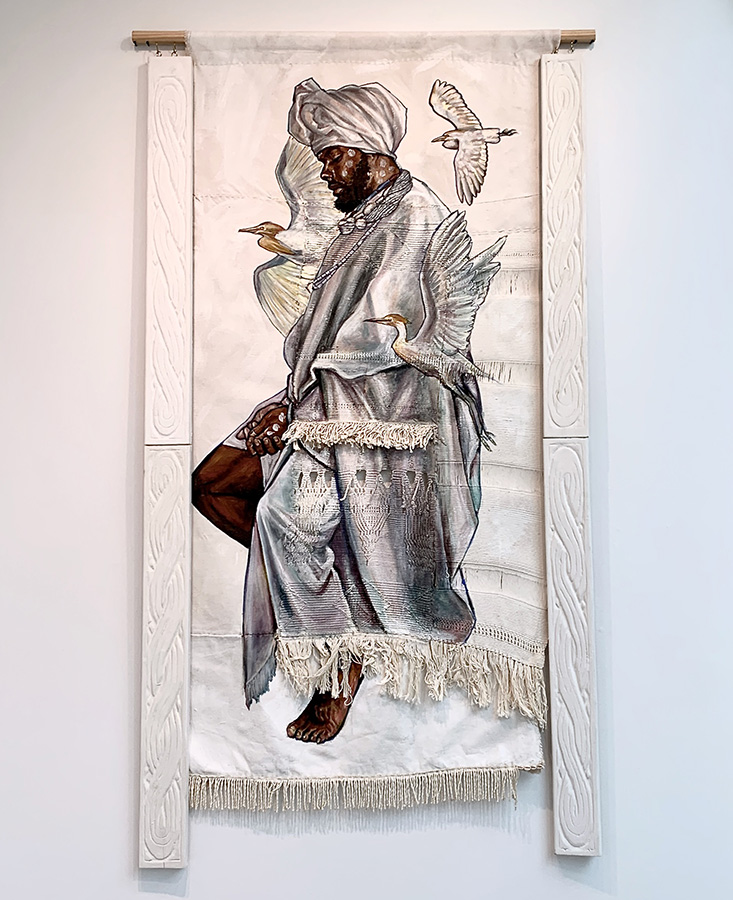November 14, 2024

Transcript by Gallery and Curatorial Fellow Tyler McSheffrey

Omo Obatala… He Who Sleeps in White and Awakens in White… He Kills The Initiate And Rouses Them To New Life is a mixed-media painting by Stephen Hamilton that depicts the profile of a Yoruba priest draped in traditional white clothing and jewelry. He is surrounded by three cattle egrets. This piece is painted on a cloth woven by Hamilton and is framed by four wood-carved panels. It spans 93 inches tall and 56 inches wide.
Hamilton’s work is heavily informed by the research he has conducted around African religion and spirituality as a PhD student in Harvard’s African & African American Studies program. His work draws from historical sources, writings, and on the ground research of traditional dyeing and weaving practices. This piece references a book called Sixteen Cowries, published by art historian and anthropologist William Bascom, and details a story dictated to him by a priest named Shalako. Hamilton’s painted figure is inspired by Bascom’s descriptions of Shalako.
Sixteen Cowries is named after a divination method practiced in the Yoruba religion. In this ritual, cowrie shells are thrown onto a surface, and the number of shells that land with the opening facing upwards is associated with 16 possible combinations called “odu”, meaning containers. Within those odu, there are associated poems that are memorized by priests. The priest then interprets and recites the associated poem to their client, and informs them of what behavioral changes and sacrifices need to be made in response to their problems. Hamilton implemented elements of this ritual as well as other Yoruba oral poetry into this piece.
The priest depicted in this painting is modeled after a friend of Hamilton’s. It was a part of a larger project where he worked alongside his cousin. His cousin worked as the photographer, and Hamilton provided artistic direction and costuming. The drawing and subsequent painting are both in response to this series of photographs. This photo series also included brief interviews with the models where they asked questions about how they saw themselves and wanted to be seen by others. Have you ever had your portrait painted or your photograph taken? How did you want to be portrayed?